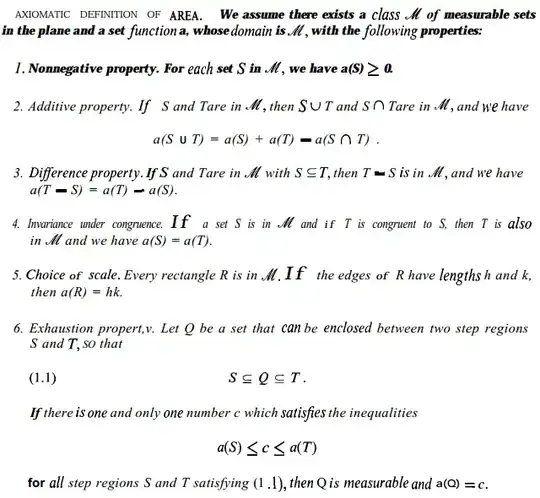I'm reading Apostol's Calculus. Given the axioms
I got a silly doubt. A point is a measurable set with zero area, according to the axioms. Suppose I have a square with $a(S)=16$ and a point with $a(P)=0$, then I can use $(3)$ from the axioms above and subtract one from another.
Wouldn't that imply that I could apply $(3)$ repeatedly, remove all the points in $S$ and still have $a(S)=16$ even when $S$ has no points and should have $a(S)=0$?
